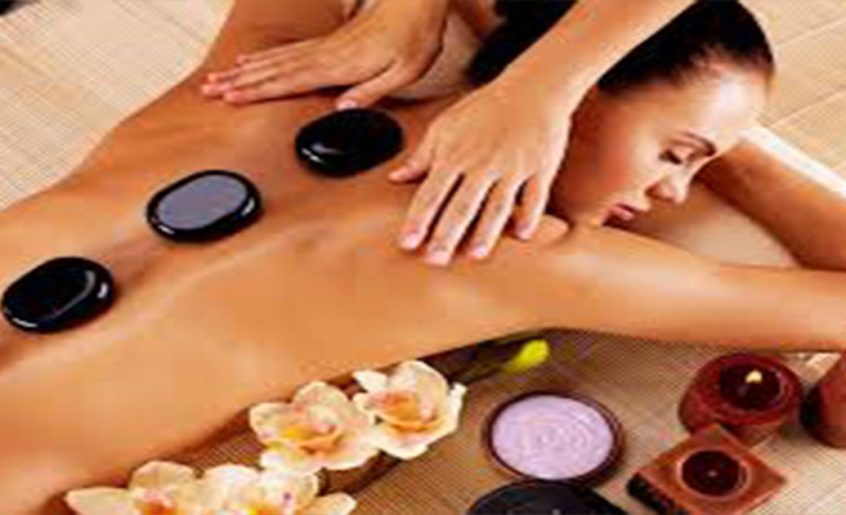
Of course. A hot oil massage is a luxurious and therapeutic treatment that involves massaging the body with oil that has been warmed.
Here’s a comprehensive overview of what it is, its benefits, what to expect, and important safety considerations.
What is a Hot Oil Massage?
At its core, it’s a type of massage where the therapist uses generous amounts of oil (such as coconut, almond, olive, or sesame) that has been gently warmed to a comfortable temperature. The warmth penetrates deeply, while the massage techniques work on muscles and tissues.
Key Benefits
The combination of heat and massage offers a powerful synergy of benefits:
- Deep Muscle Relaxation: The heat helps to loosen tight muscles, relieve knots, and reduce stiffness, making the massage more effective and allowing for deeper work without discomfort.
- Improved Blood Circulation: The warmth causes blood vessels to dilate (vasodilation), improving blood flow. This delivers more oxygen and nutrients to tissues and helps flush out toxins.
- Skin Nourishment: The warm oil deeply moisturizes the skin, leaving it soft, supple, and glowing. It can help with dry, flaky skin and improve skin elasticity.
- Calms the Nervous System: The soothing warmth and rhythmic massage strokes are profoundly relaxing, reducing stress and anxiety. It can promote better sleep and a general sense of well-being.
- Relief from Aches and Pains: Excellent for relieving chronic pain conditions like arthritis, lower back pain, and general body aches.
- Joint Mobility: The heat and lubrication can help improve flexibility and range of motion in the joints.
- Detoxification: By stimulating circulation and the lymphatic system, it can aid the body’s natural detoxification processes.
What to Expect During a Session
- Consultation: The therapist will ask about any areas of tension, injuries, or health conditions.
- Preparation: You will be left alone in the room to undress to your level of comfort and lie on the massage table, covered by a sheet or towel.
- The Massage: The therapist will uncover only the part of the body they are working on. They will pour the warm oil onto your skin and use a variety of strokes (like long gliding strokes, kneading, and circular pressure) to massage your muscles.
- Sensation: The initial sensation is one of soothing warmth as the oil is applied. The combination of heat and skilled touch is deeply relaxing.
- After the Massage: You will be left to relax for a moment before getting dressed. It’s normal to feel a bit oily afterward, though the therapist will usually provide towels.
Popular Oils Used and Their Specific Properties
- Coconut Oil: Light, easily absorbed, and has a pleasant aroma. It’s cooling in nature and great for Pitta body types (in Ayurveda).
- Almond Oil: Rich in Vitamin E, it’s a superb moisturizer and good for most skin types.
- Sesame Oil (especially in Ayurveda): A classic choice for Abhyanga (Ayurvedic oil massage). It’s warming, nourishing, and is believed to balance Vata dosha.
- Olive Oil: Deeply penetrating and rich in antioxidants. It’s very moisturizing but can feel a bit heavy.
- Jojoba Oil: Very similar to the skin’s natural sebum, making it an excellent non-comedogenic choice for most skin types, including sensitive or acne-prone skin.
Important Safety Considerations & Who Should Avoid It
While generally very safe, there are some contraindications:
- Open Wounds or Rashes: Do not apply oil to broken or infected skin.
- Certain Medical Conditions: People with diabetes, high blood pressure, heart disease, or varicose veins should consult a doctor first, as heat can affect circulation.
- Recent Injury or Inflammation: Heat can worsen acute inflammation (like a fresh sprain) or swelling.
- Pregnancy: Always inform your therapist and get approval from your doctor. Special precautions and positioning are needed.
- Burns or Nerve Damage: If you have reduced sensation, you may not feel if the oil is too hot, leading to burns.
- Fever or Illness: Avoid massage when you have a fever or contagious illness.
How to Do a Simple Hot Oil Massage at Home
You can easily enjoy a scaled-down version at home:
- Choose Your Oil: Pick a high-quality, natural oil that suits your skin.
- Warm the Oil: Pour a small amount into a heat-safe container (like a glass bowl). Place this bowl in a larger bowl of hot (not boiling) water for a few minutes. Never heat oil directly on a stove or in a microwave, as it can get dangerously hot and burn you.
- Test the Temperature: Always test a drop on the inside of your wrist—it should feel warm and pleasant, not hot.
- Massage: Apply the oil to your skin and use firm, long strokes moving towards your heart (e.g., from feet to thighs, from hands to shoulders). Spend extra time on tense areas.
- Relax: For deeper absorption, you can sit or lie down for 15-20 minutes. For a traditional treatment, you can then take a warm shower to rinse off the excess oil, leaving your skin deeply moisturized.
In summary, a hot oil massage is a deeply restorative treatment for both the body and mind. Whether experienced at a spa or at home, it’s a wonderful way to relieve stress, soothe aching muscles, and nourish the skin.
